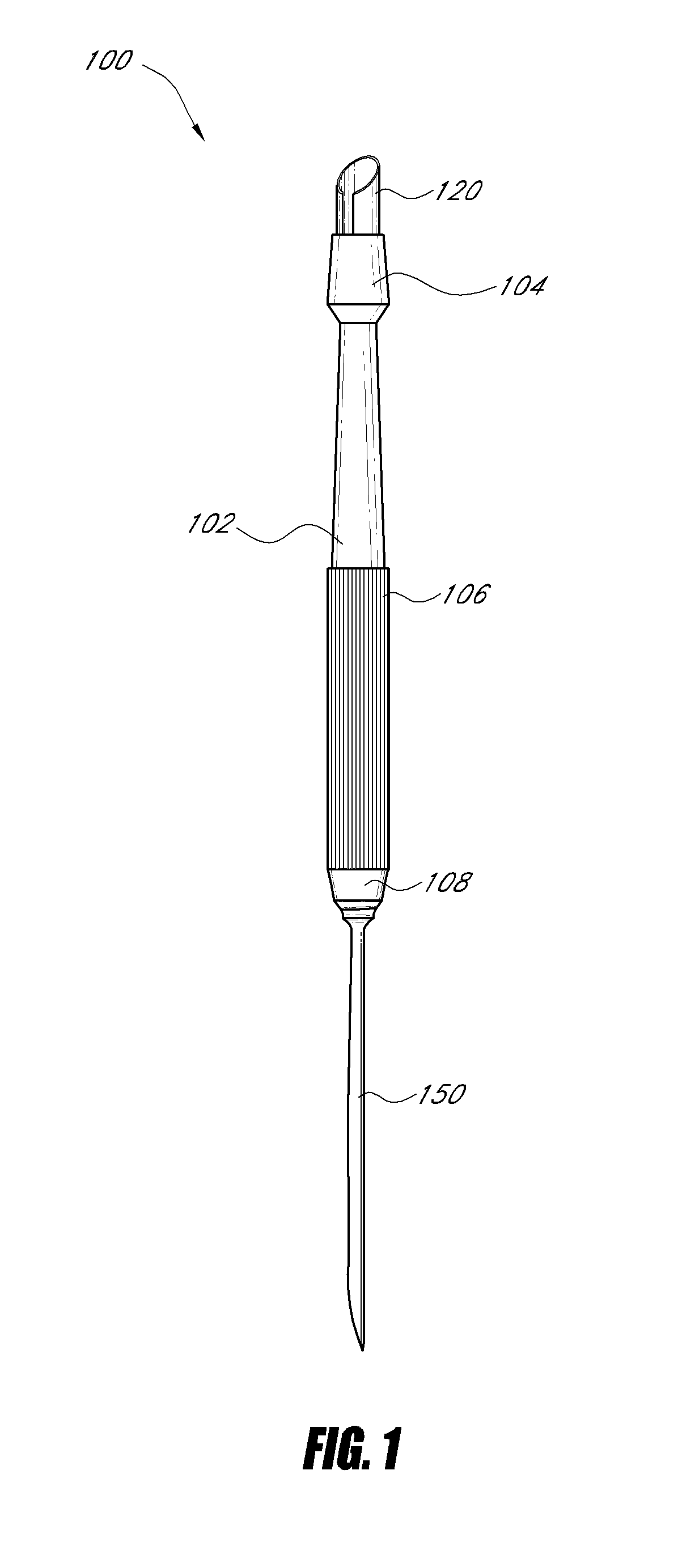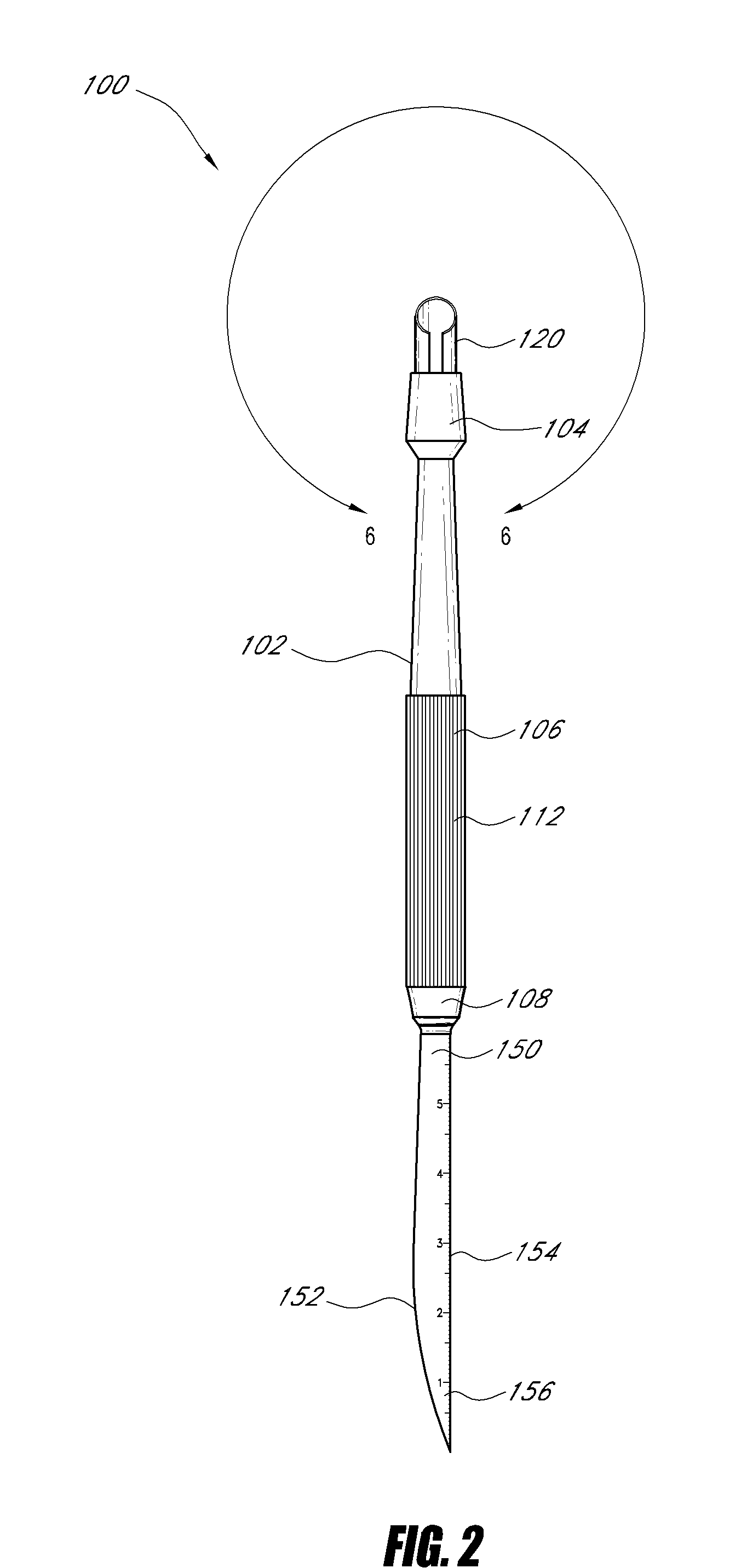Wound debridement instrument
a debridement tool and wound technology, applied in the field of wound debridement tools, can solve the problems of uncomfortable scalpel use, inconvenient use of scalpels, and inability to use existing straight-bladed instruments such as surgical scalpels in debriding such wounds, and achieve the effect of precise tissue removal and simple us
- Summary
- Abstract
- Description
- Claims
- Application Information
AI Technical Summary
Benefits of technology
Problems solved by technology
Method used
Image
Examples
Embodiment Construction
[0033]With initial reference to FIGS. 1 through 6, an embodiment of a wound debridement tool is illustrated. The tool comprises an elongate handle 102, a cutting element or first working element 120, and a scraping element or second working element 130. The elongate handle 102 is generally cylindrical in cross-section and comprises a distal end portion 104, a mid-section 106, and a proximal end portion 108. The distal end 104 is coupled to the cutting element 120 and the proximal end is coupled to the scraping element 150.
[0034]The mid-section 106 preferably is provided with a textured surface 112 that extends lengthwise along the midsection. Preferably the textured surface 112 is finely grooved or ribbed so as to provide traction on the handle. In some embodiments, the length of the textured surface may vary. For example the textured surface may extend the length of the entire handle, providing the handle with additional traction.
[0035]A portion of the mid section 106 preferably ta...
PUM
 Login to View More
Login to View More Abstract
Description
Claims
Application Information
 Login to View More
Login to View More - R&D Engineer
- R&D Manager
- IP Professional
- Industry Leading Data Capabilities
- Powerful AI technology
- Patent DNA Extraction
Browse by: Latest US Patents, China's latest patents, Technical Efficacy Thesaurus, Application Domain, Technology Topic, Popular Technical Reports.
© 2024 PatSnap. All rights reserved.Legal|Privacy policy|Modern Slavery Act Transparency Statement|Sitemap|About US| Contact US: help@patsnap.com










